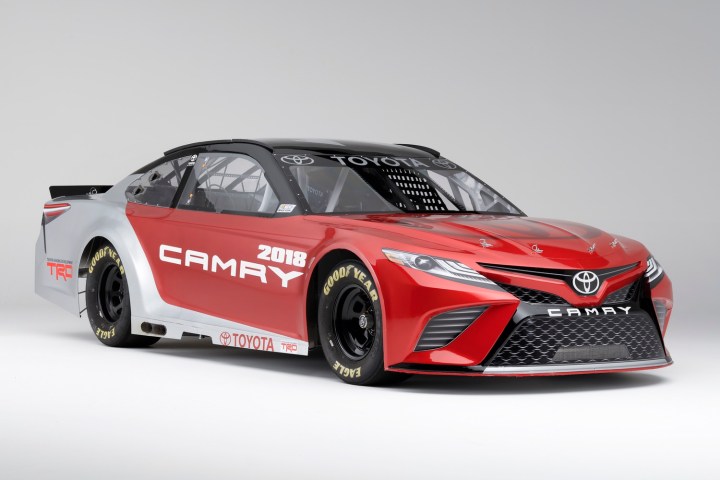
The redesigned 2018 Camry road car debuted this week at the 2017 Detroit Auto Show, so Toyota decided to unveil the new NASCAR racer alongside it. But don’t let that give the impression that the NASCAR Camry is in any way related to the car people can actually buy. As before, the only thing that makes this car a Camry is the name badge on the front.
NASCAR stands for National Association for Stock Car Auto Racing, but the cars that compete in this series are anything but stock. The NASCAR Camry is a purpose-built machine that shares virtually nothing with the road-going version, and it’s the same story with the NASCAR racers fielded by Ford and Chevrolet.
Underneath the bodywork is a tube-frame chassis, and while the stock Camry sports an array of four-cylinder and V6 powertrains and front-wheel drive, the NASCAR version uses a large V8 and rear-wheel drive. That’s down to the rules of the race series, which specify that manufacturers all build cars to a certain template optimized for NASCAR-style races, but that isn’t very relevant to production cars.
Toyota did at least try to make the NASCAR Camry look like a stock Camry, even having its Calty design studio consult during the development of the race car. But the demands of the rules meant that work could only go so far. For example, while the stock Camry is a four-door sedan, the NASCAR Camry has no doors at all.
The restyled NASCAR Camry will make its racing debut next month at the Daytona 500, NASCAR’s season opener. The 2018 Toyota Camry road car will arrive in showrooms later in the year.


